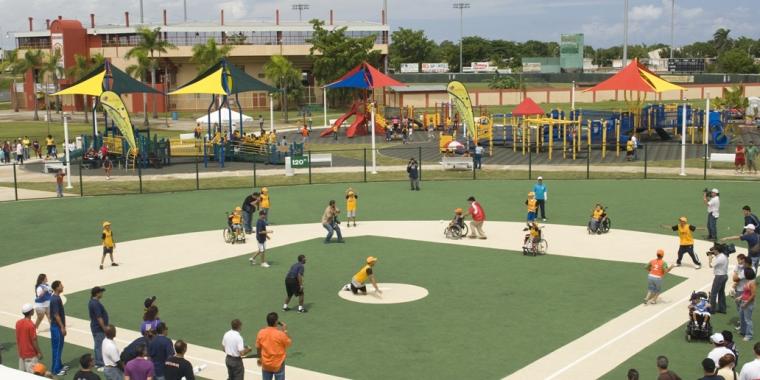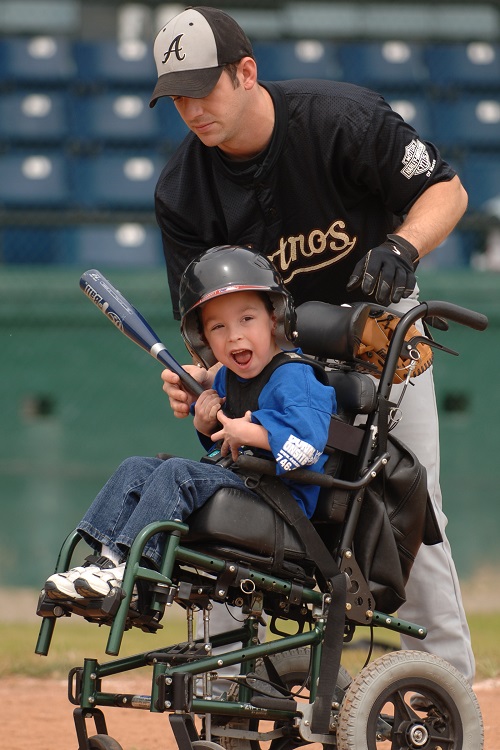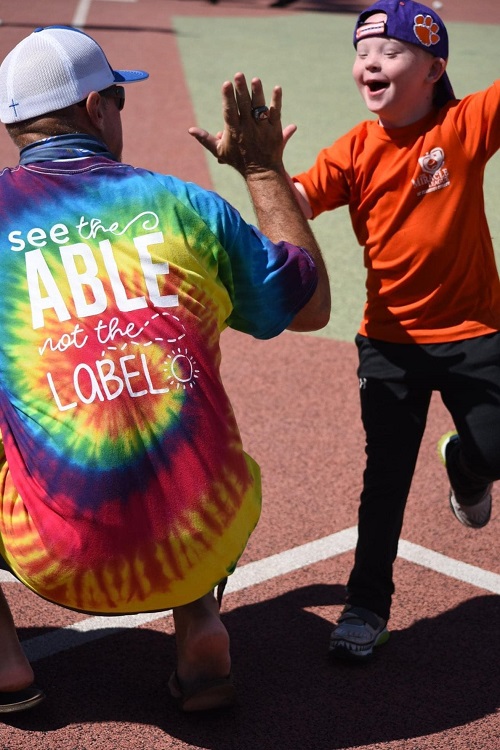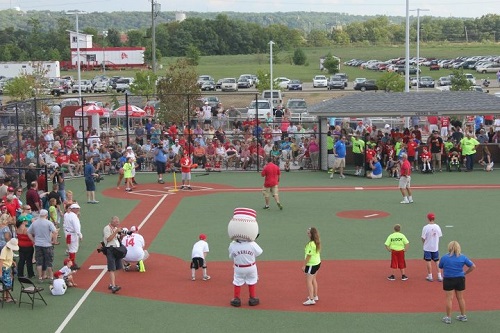
The motto of The Miracle League is simple: “Every child deserves the chance to play baseball.” The organization, which was established in 2000, allows communities to set up programs that encourage all players, who might not otherwise get to play, to take part in the sport to the best of their abilities.
One key aspect of the Miracle League is its accessible fields and its specific rules designed to assist all players in being able to enjoy the game. Fields are now constructed in conjunction with many multi-sport complexes, as well as at the municipal and recreational level. Stephanie Davis, program director, sat down with SDM to talk about the growth of the program.
Sports Destination Management: The Miracle League has really grown! It seems like every week, we hear about at least one field being built in conjunction with a sports complex.

Stephanie Davis: Yes! We were established in Conyers Georgia in 2000 with one field, and that was just supposed to be a local project and a one-off. Then the media coverage hit. Now, we have 300 Miracle Leagues, including a few international ones as well.
SDM: People often use the term, Miracle Field, to mean any field that is accessible, but it is actually a specific venue that is associated with your program, right?
Davis: We do have preferred partners for every aspect: design, construction and so on, but in general, these fields look different from what you typically see. For the surface, for example, we have multiple options, including poured in place rubber and two specially designed turf options; it really depends on the need of the program. If, for example, a community wants to use the area for multi-purpose sports or for youth baseball, they might opt for turf.
The turf is a short nylon pile with a backing that is glued down to an asphalt base. That creates a base that is firm enough for wheelchairs and walkers, while allowing for movement of the ball. The rubberized surface allows for the same kind of accessibility but of course, it’s not grass. We also encourage people to incorporate inclusive and accessible playgrounds near the fields.
SDM: What was the reasoning behind moving to preferred partners?
Davis: When we started out years ago, we did not have preferred surfaces. The rubberized fields were made of running track material, but that was a very high end product and was really priced out of the market for organizations like YMCAs and parks and rec departments. About 15 years ago, we put into play a list of approved surface vendors and we began encouraging all leagues to use those. If they choose not to do so, they can not use the Miracle League name and we will not sign off on any liability issues. There are also a lot of independent programs out there.
SDM: Let’s talk for a minute about the participants in the Miracle League. Is it just for youth?
Davis: No, not at all. The Miracle League is open to all ages and abilities. If you have anything that sets you apart and keeps you from participating, we want to make sure you are involved. We see a huge mix of physical and intellectual disabilities, including people who have both. We also have kids on the spectrum, those with sensory issues; unfortunately, a lot of the world sees that as a behavior problem, but we do not.
 SDM: How often do communities contact you about starting leagues and putting in fields?
SDM: How often do communities contact you about starting leagues and putting in fields?
Davis: We get calls every day. We get hundreds of calls and e-mails each month, either from people looking for a league to play in, or those who want to add programs to their communities. Everyone receives a package from us with information on how to proceed.
Note: The website for the Miracle League has a Frequently Asked Questions section, available here.
SDM: How quickly can people establish leagues and put in fields?
Davis: It depends on the community and what kind of partnerships they have and the funding. If someone joins today as a Miracle League, they could be up and running in two to three years.
SDM: Is there a lot of variety in Miracle Leagues?
Davis: There is. You’ll never find two that are the same. One may be strictly government-run, with staff and funding that are operated by the parks and recreation department, but next door to that could be another with a program that is operated by the YMCA, Goodwill, Easter Seals or another program.
SDM: Do you work with sports commissions?
Davis: Yes, we have worked with sports commissions who want to put Miracle Fields into the sports tourism parks in their areas; in fact, right now, we are getting ready for our All-Star Game, which will be held in Palm Beach in November.
SDM: Does the Miracle League have partnerships with Major League Baseball?
Davis: We probably work with most of the Major League teams, everything from them coming out for special nights at the park to being buddies to some of the kids in the program. Some ball clubs, and even individual players, have given millions of dollars to build fields and establish programs in their area. They really love to give back, particularly to the communities where they grew up.
SDM: You mentioned buddies a few minutes ago. Those are volunteers, right?
Davis: Yes, every one of our Miracle League participants is paired up with a buddy; if there are 100 players, we need 100 buddies. Ideally, these are people who work with the player for a season, or at least multiple games. We really like the fact that in many cases, the buddies go to the same school as the players, and the players develop relationships with them. They go to birthday parties and sit with them at lunch. It breaks the barrier between those who have disabilities and those who don’t, and it really helps them in ways we never dreamed of.
 SDM: One last question. In an ideal world, what would you like a Miracle Field venue to look like?
SDM: One last question. In an ideal world, what would you like a Miracle Field venue to look like?
Davis: Our dream park is something that is fully inclusive and accessible from the moment people exit their cars, including not just the fields but the bathrooms, concessions and playground, with adult changing tables and other amenities in the rest rooms.
SDM: That’s something you don’t think about.
Davis: No, these are all the things you don’t think of until you ask the families, and you don’t think about it until you have to experience it.

